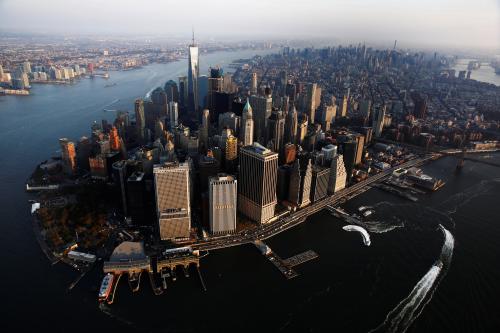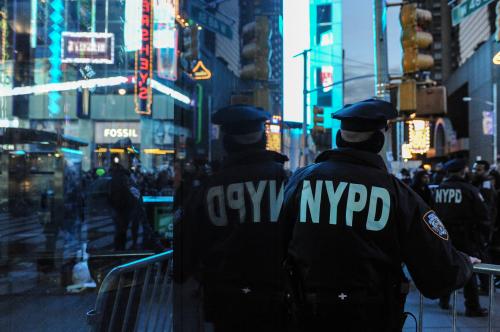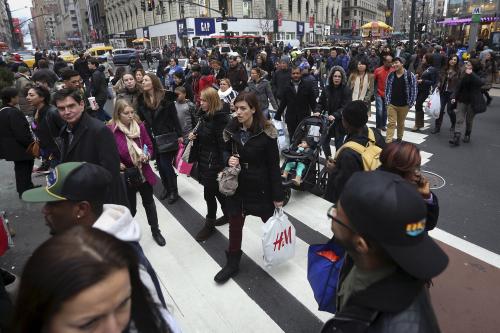What are the greatest dangers to citizens of the world’s cities, as well as its towns, villages, and rural areas? This is an important issue to understand as we approach the general election season in the United States, when candidates for the highest office in the land will have to help voters make sense of the state of violence around the world—and tell us what they would do about it.
Headlines can be deceiving. We hear about China’s rise, Russia’s adventures, North Korea’s nuclear misbehavior, the Iran nuclear deal, Pakistan and Afghanistan, and of course ISIS and civil war in the Middle East all the time. But it is also worth taking a step back to understand the broader state of violence on the planet today. Do so, and you might be surprised.
As part of a Brookings-JPMorgan Chase project that we call Securing Global Cities, we have attempted to map these trends in violence, benefiting greatly from ongoing work at European think tanks like the Peace Research Institute Oslo (PRIO) and the Stockholm International Peace Research Institute (SIPRI), the University of Maryland, and the United Nations. Here are some of the most salient facts and figures:
- Even with Russian President Vladimir Putin’s activities from Ukraine to Syria in recent years, interstate conflict remains low and mild in intensity by historical standards, thankfully. China’s activities in the South China Sea, however concerning, do not presently broach the threshold of interstate war.
- Unfortunately, the picture is more muddled for civil war. It remains less prevalent and less deadly than in the worst periods of the Cold War and the 1990s. But it has ticked up considerably since the beginning of the Arab spring in 2011, especially in the broad arc from the Sahel in Africa through the Middle East and to South Asia. Worldwide, perhaps 100,000 people a year are dying in civil wars.
- Yet war and terrorism are not the primary security threats to most people on the planet today. Notably, each year, more than 400,000 people are murdered around the globe, according to the United Nations Office on Drugs and Crime.
- Murder rates are highest in the Americas and in Africa, at least twice the global average. They are greatest in central and southern Africa, and from Brazil and Venezuela/Colombia to Central America and the Caribbean and Mexico.
- The least violent parts of the world include most of East Asia and Western Europe, despite the terrorism threat afflicting the latter region of late.
- The “most improved” regions in recent decades include Colombia, former war-torn African states like Angola, Mozambique, Liberia, and Sierra Leone, as well as parts of Southeast Asia and a number major U.S. cities.
- If one broadens the lens on the definition of violence, motor vehicle accidents constitute an even bigger threat. The World Health Organization estimates that 1.2 million people a year die in such accidents worldwide.
- As cities and countries think about future security, they must bear in mind not just these current realities but the potential for catastrophe—from earthquakes, droughts, pandemics, nuclear reactor disasters, and massive infrastructural failures. In a worst case, tens of millions could suddenly be put at acute risk.
There is much to celebrate about the human condition today. Despite the headlines, life has actually never been safer or more prosperous for a higher fraction of the world’s population. But our progress is fragile, and it is of course incomplete.
The next U.S. president needs a plan for Syria, Libya, and Yemen, to be sure. But he or she also needs to address the broader challenges of urban and global security for a planet that is getting healthier and more secure but which still has a very long ways to go. A good first step is to collect and study what works in key cities and countries around the world so that we can all learn from each other, on topics ranging from breaking up gangs to corralling drug traffickers to stopping terrorism. A great deal has been learned; it is time to spread the knowledge, and emulate the best practices worldwide.



Commentary
Mapping—and tackling—the world’s violence
June 2, 2016